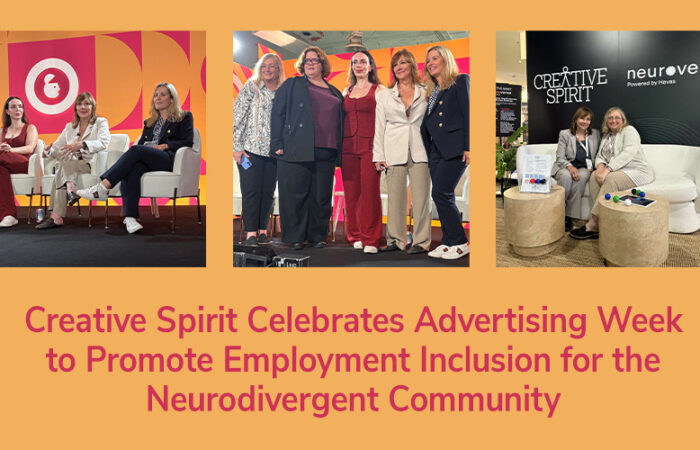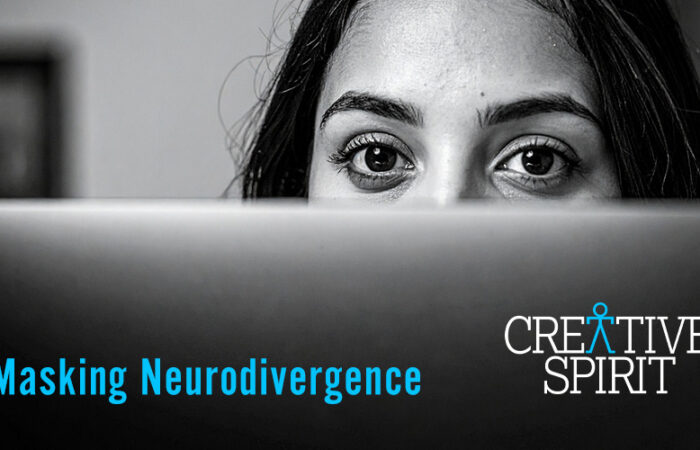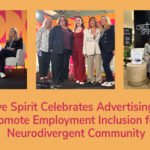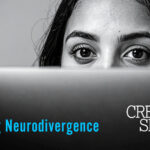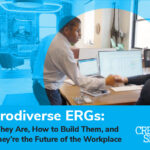By Menachem Rephun, Communications Manager, Creative Spirit
In today’s world, the idea that slurs or insults are not simply words, but can have real, lasting consequences, is often trivialized as an overreaction, hypersensitivity, or “political correctness”. In reality, this is far from the case, as ableism can cause real, lasting harm. This is especially true in employment, where ableist language, or language used to discriminate against people with disabilities, is still often used, leading to marginalization and exclusion. As disability rights advocate Rachel Cohen-Rottenberg writes, “I tend to remark on this kind of [ableist] speech wherever I see it. In some very rare places, my critique is welcome. In most places, it is not.” Part of the explanation for why ableist language is still so persistent lies in the fact that acknowledging and confronting one’s own prejudices is never easy. Those prejudices, whether conscious or unconscious, almost certainly contribute to the 30-40% unemployment rate for people with disabilities in the U.S., according to research from the American Enterprise Institute. However, confronting that prejudice is needed to end, or at least reduce, ableism. In this article, we’ll share insights from disability rights advocates and experts on why ableism/ableist language is so damaging and strategies that can be used to push back against it.
Why Ableism is Different From Other Forms of Prejudice
On a psychological level, ableism is partially rooted in the misconception among non-disabled individuals that people with disabilities are somehow inferior or other. In an essay for Forbes, Andrew Pulrang, a contributor with a disability, writes that ableism, unlike other forms of discrimination, is often treated as a “logical” or “natural” prejudice, and that people with disabilities are often gaslighted into accepting ableist language directed at them.
“One ableist idea leads to another,” Pulrang writes. “It’s natural for people to be uncomfortable around disabled people. It’s logical to expect disabled people to be less capable. Non-disabled people’s discomfort, awkwardness, and rude behavior towards disabled people is to be expected.” He adds that, while people with disabilities do face greater difficulties in certain areas, “this realism becomes harmful gaslighting when it’s used to suggest that ableist reactions, preferences, and habits are “natural,” and therefore justified.”
“Disabled people hear a variation on this theme all the time,” Pulrang adds, “He didn’t mean anything by it!” They are constantly reminded that awkward, outdated, or inappropriate comments aren’t intentional. And other forms of disability discrimination are likewise mostly unintentional.” Pulrang observes that, while using the wrong disability terminology can be an honest mistake, pressuring people with disabilities to be forgiving and diplomatic in any and all situations is unhealthy and wrong.
“Making disabled people feel guilty and wrong for feeling angry about ableism and other injustices makes everyone else’s life a little easier,” Pulrang writes. He muses that this might be “one of the reasons why the idea of benign, unintentional ableism remains so popular.”
Other disability rights advocates have also shared their perspective on why seemingly innocuous words can be much more impactful and damaging than they might seem.
“When you treat a disability as a joke, metaphor, or euphemism, you are causing harm in a couple of ways,” Rakshitha Arni Ravishankar, an associate editor at Ascend, writes. “First, you are spreading the idea that it’s acceptable to dehumanize and stigmatize someone with a disability. Depending on your circle or friend group, you could even be enabling others to do the same.” Ravishankar points out that language itself is about much more than just words. Rather, it is a tool we use to assign value to things, which in turn affects our interactions with others. By the same token, using ableist language treats people with disabilities as “others” or inferior, stigmatizing people who are already marginalized even further.
“If the person facing discrimination doesn’t have a support system,” Ravishankar writes, “they may start to believe something is wrong with them, and that’s dangerous.”
People With Disabilities Weigh in On Ableist Language
Other people with disabilities have attested firsthand to how ableist language has hurt them and damaged their self-esteem.
“It always stings when I’m reminded that for many, the word ‘deaf’ has little to do with what I love most,” Sara Novic, a features correspondent for BBC.com, writes. “In fact, its connotations are almost exclusively negative. For example, in headlines across the world – Nevada’s proposed gun safety laws, pleas from Ontario’s elderly and weather safety warnings in Queensland – have all “fallen on deaf ears”.
Novic, who is deaf, writes that even a commonly-used, seemingly innocuous expression like “falling on deaf ears” suggests that most people “associate deafness with willful ignorance (even if they consciously may not). But much more than individual slights, expressions like these can do real, lasting harm to the people whom these words and phrases undermine – and even the people who use them in daily conversation, too.” Novic adds that using language that equates disability with something negative creates an inaccurate picture of what being disabled actually means, and that using disability as a metaphor can also be imprecise.
“The phrase ‘fall on deaf ears’, for example, both perpetuates stereotypes and simultaneously obscures the reality of the situation it describes,” she writes. “Being deaf is an involuntary state, whereas hearing people who let pleas ‘fall on deaf ears’ are making a conscious choice to ignore those requests. Labelling them ‘deaf’ frames them as passive, rather than people actively responsible for their own decisions.” Novic encourages people to eliminate ableist language from their vocabulary, including the use of expressions like “ignoring” or “choosing not to engage” in place of “falling on deaf ears”. She points out that ableist language is detrimental not only to people with disabilities, but to those who are non-disabled, by creating an oppressive environment that can impact them if they become disabled later in life themselves. To push back against ableism, Novic recommends speaking with people with disabilities to hear their perspective and to build a more inclusive vocabulary. She quotes Rosa Lee Timm, CMO of the nonprofit Communication Service for the Deaf, who suggests that those without disabilities should “ask questions, avoid assumptions, and start by listening to the people who are impacted the most. Think about whether your own word choice is contributing to their oppression.”
Along with disability rights advocates, people without disabilities have also acknowledged their tendency to unconsciously use ableist language, and constructive ways they’ve found to avoid it.
“Years ago, when I was a kid, I didn’t know I was using ableist language when I exclaimed, “You want me to get a A on that test? Are younuts?” Gail Kerzner writes on her blog The Savvy Red Pen. “And “You’re so crazy, you’re acting like an idiot. You belong in the state hospital!” Or as an adult, when I have said, “You’re so OCD, you’re never on time!” or “I’ve explained the problem so many times, are you deaf?” I didn’t know I was using ableist language. Now, I’m acutely aware.” She notes that ableist language treats people with disabilities as inferior, despite the fact that 1 in 4 people in the U.S. have a disability, as well as 15% of people (1 billion people) worldwide. Kerzner writes that she herself can now be classified as having a disability, due to conditions like arthritis, short-term memory loss, celiac disease, and others.
“People don’t typically see me that way,” she writes. “I have all my body parts and move at a pretty fast clip. But I have become more aware of ableist language used in my presence, and I promise you, it hurts. Even though my hearing is “less than,” my radar goes up even more when I am on the receiving end of hurtful words.” Kerzner’s essay highlights that, at times, experiencing disability personally is the catalyst needed for non-disabled people to truly empathize with the disability community. However, that understanding and support can be cultivated even without having a disability yourself. Improving education about the broad spectrum of disabilities and neurodiversity, recognizing the statistical likelihood that we will all experience disability at some point, and speaking with people with disabilities/neurodiversity to hear their perspectives can go a long way in building that solidarity.
In his essay, Andrew Pulrang writes that gaslighting people with disabilities can be avoided by steering clear of positive cliches about disability, which can undermine a disabled person’s experiences and feelings. He also advises not trying to redefine or dismiss the hardships people with disabilities face, and avoiding the impulse to “reform” a disabled person or change their attitude.
“From non-disabled people especially, it’s galling to be told to ‘cheer up’ and ‘think positive’ in response to every genuine hardship,” Pulrang writes. Accepting people with disabilities for who they are, rather than pressuring them to adapt or change for the convenience or comfort of non-disabled individuals, is a huge step toward fixing the problem of ableism. In more clinical terms, this would be described as the “social model” of disability, which encourages society to become more accessible for people with disabilities, rather than forcing them to change or adapt. Having read this article, you may be wondering what you can do yourself to make a difference. An important step is considering the people with disabilities you might know or encounter in your own life, whether as friends, family members, coworkers, or neighbors. For many of them, ableism and ableist language are not abstractions, but very real, painful problems in daily life. They can attest personally to the fact that ableist language can have very real consequences. By embracing a “person-first” mentality that recognizes the humanity and individuality of people with disabilities, business leaders, hiring managers, and coworkers have the power to transform neurodiverse employment for the better.
Sources
Cohen-Rottenberg, R. (2014). “10 Questions About Why Ableist Language Matters, Answered”. Everyday Feminism. https://everydayfeminism.com/2014/11/ableist-language-matters/
CTE Policy Watch. (2024). “Research Roundup: Neurodiversity in the Workplace, Student Financial Aid Eligibility and Guided Pathways”. Association for Career and Technical Education. https://ctepolicywatch.acteonline.org/2024/05/research-roundup-neurodiversity-in-the-workplace-student-financial-aid-eligibility-and-guided-pathwa.html
Kerzner, G. (2021). “The Harm of Ableist Language & What We Can Do About It”. The Savvy Red Pen. https://thesavvyredpen.com/ableist-language
Novic, S. (2021). “The harmful ableist language you unknowingly use”. BBC.
https://www.bbc.com/worklife/article/20210330-the-harmful-ableist-language-you-unknowingly-use
Pulrang, A. (2023). “3 Forms of Gaslighting Disabled People Experience Most Often”. Diversity, Equity & Inclusion, Forbes. https://www.forbes.com/sites/andrewpulrang/2023/08/28/3-forms-of-gaslighting-disabled-people-experience-most-often
Ravishankar, R. (2020). “Why You Need to Stop Using These Words and Phrases”. Harvard Business Review. https://hbr.org/2020/12/why-you-need-to-stop-using-these-words-and-phrases

